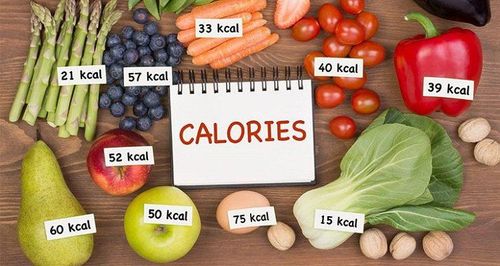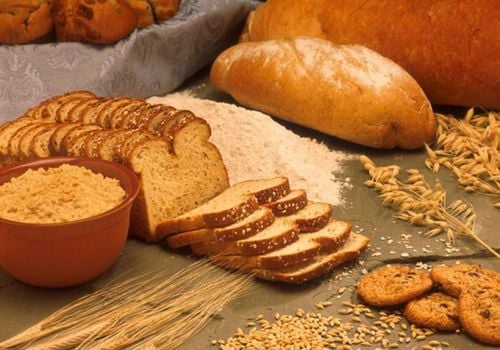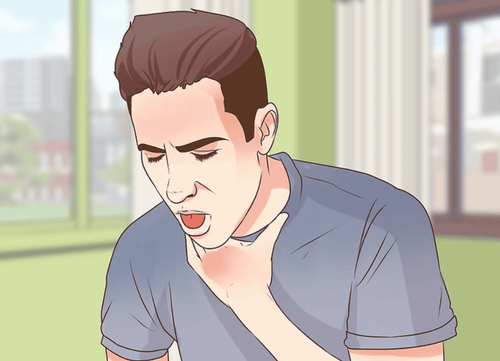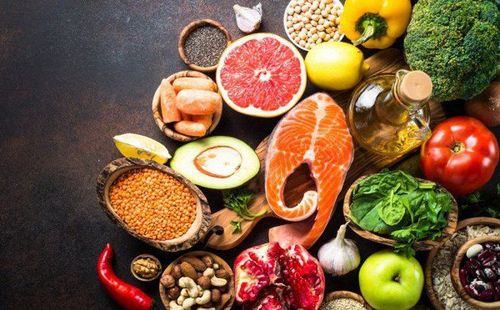This is an automatically translated article.
Obesity is one of the major public health concerns worldwide. However, there is still a lot of confusion surrounding fat loss, especially where the fat goes after you lose weight.
1. Fat Metabolism
Where does fat go after weight loss? Fat is converted into carbon dioxide and water. You exhale carbon dioxide and water enters your circulation until it is excreted as urine or sweat.
If you lose 10kg of fat, exactly 8.4kg goes out of your lungs and the remaining 1.6kg turns into water. This comes as a surprise to everyone, but actually, almost everything we eat comes back through the lungs. Every carbohydrate you digest and nearly all fat is converted into carbon dioxide and water. So is wine. Protein shares the same fate, except for a small part that turns into urea and other solids, which you excrete as urine.
The only thing in food that leaves your intestines undigested and intact is fiber. Everything else you swallow gets absorbed into your bloodstream and organs and then it doesn't go anywhere until you vaporize it.
2. How to lose fat?

Bạn nên ăn các thực phẩm chứa ít calo
To promote weight loss, you need to consume fewer calories than you burn. By maintaining a consistent calorie deficit, fat is released from fat cells and transported to the energy-producing machinery of cells in the body, the mitochondria. Here, fat is broken down through a series of processes to produce energy.
If the calorie deficit continues, the stored fat from your body will continue to be used for energy, leading to a reduction in body fat.
3. Diet and exercise

Chế độ ăn kiêng
The two main factors that promote fat loss are diet and exercise.
Exercise increases blood flow to muscles and fat cells, releases fat to be used as energy in muscle cells at a faster rate and increases energy expenditure.
Popular resistance training exercises include weight lifting, weight training, and resistance banding, while examples of aerobic exercise are running, cycling, or using an elliptical.
When calorie restriction and a nutrient-rich diet are combined with the right exercise regimen, fat loss is more effective than with the use of diet or exercise alone.
4. Where did you lose weight first?
Usually, people desire to lose weight from the belly, hips, thighs and buttocks. Although weight loss in a specific area has not been shown to be effective, some people tend to lose weight from some areas more quickly than others.
That said, genetic and lifestyle factors play an important role in the distribution of body fat.
Furthermore, if you have a history of weight loss and weight regain, body fat may be distributed differently due to changes in fat cells over time.
5. Why is it so hard to lose weight?
When you eat more than your body can burn, fat cells increase in both size and number.
When you lose fat, those same cells can shrink in size, although their number remains the same. Therefore, the main reason for the change in body shape is the reduced size not the number of cells.
This also means that when you lose weight, the fat cells remain and without effort to maintain weight loss, they can easily increase in size again.
6. Timeline of fat loss

Giảm cân nhanh có thể bị kinh nguyệt không đều và một số tác dụng phụ khác
Depending on how much weight you plan to lose, the length of your slimming journey can vary significantly.
Rapid weight loss has been associated with a number of negative side effects, such as micronutrient deficiencies, headaches, fatigue, muscle loss, and irregular periods.
Therefore, many advocate slow, gradual weight loss due to the expectation that it may be more sustainable and may prevent weight regain.
The rate of weight loss is expected to vary with how aggressive the weight loss program is. For people who are overweight or obese, a 5%-10% reduction of your initial body weight in the first 6 months can be accomplished with a comprehensive lifestyle intervention that includes diet, activity, and exercise. physical movements and practical techniques.
Several other factors influence weight loss, such as your gender, age, calorie deficit and sleep quality. Also, some medications can affect your weight. However, it is advisable to consult a health professional before starting a slimming regimen.
Once you reach your desired body weight, your calories can be adjusted to maintain your weight. Just remember, it's important to continue to exercise regularly and eat a nutritious, balanced diet to prevent weight gain and promote overall health.
Vinmec International General Hospital currently has a Cardiovascular and Diabetic Screening Package with the following outstanding advantages:
Performed by a team of medical-physicians who are leading experts, highly qualified, dedicated and wholeheartedly for the benefit of the patient. With 90% having university degrees, 20% being professors and associate professors, nearly 30% having doctorate degrees, bringing high efficiency in medical examination and treatment. Comprehensive and professional medical examination, consultation and treatment services. The system of modern equipment, supports effective diagnosis and treatment. Modern, civilized, luxurious and sterile medical examination and treatment space.
If there is a need for consultation and examination at the Hospitals of the National Health System, please book an appointment on the website to be served.
Please dial HOTLINE for more information or register for an appointment HERE. Download MyVinmec app to make appointments faster and to manage your bookings easily.













